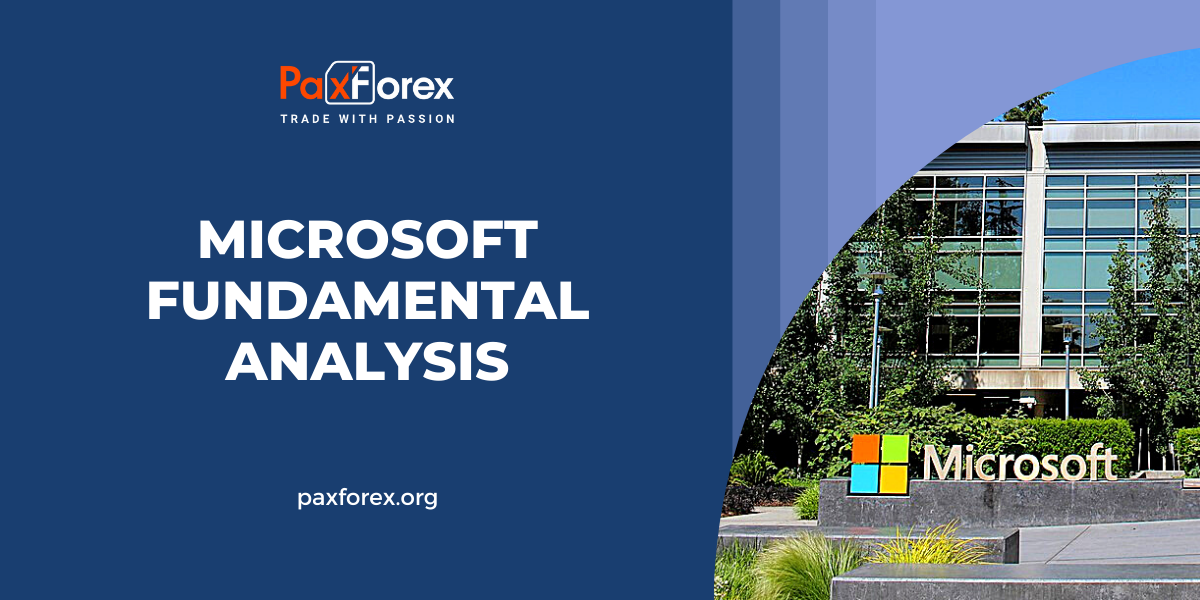
Source: PaxForex Premium Analytics Portal, Fundamental Insight
In January, Microsoft made waves in the technology sector with the announcement of a substantial $10 billion investment in the prominent artificial intelligence (AI) startup, OpenAI. This marked Microsoft's second significant backing of the venture, following an initial injection of $1 billion in 2019, bringing its total investment in OpenAI to an estimated $13 billion.
At the core of any nascent company lies its founding team. In OpenAI's case, 12 individuals, including Tesla's Elon Musk, played pivotal roles in its establishment in 2015. However, none have been more influential within the organization than Sam Altman, who served as its CEO from 2019 until last Friday, when he was ousted by OpenAI's board of directors.
Altman's removal has sparked significant discontent among OpenAI's investors, customers, and particularly its employees, many of whom are now considering resigning. While the implications of OpenAI's internal upheaval on Microsoft's multi-billion-dollar investment remain uncertain, there is speculation on how the turmoil within OpenAI could potentially propel the tech giant to a leading position in the AI industry.
Microsoft's significant investments in OpenAI over the past years played a pivotal role in the development of the startup's extensive language models, powering the widely-used generative AI application, ChatGPT. This versatile tool can swiftly respond to a diverse range of queries, generate unique digital images, create original videos based on user-defined criteria, and even produce computer code.
In exchange for its substantial financial support, Microsoft secured the integration of ChatGPT into its product portfolio. The chatbot is now accessible through various Microsoft platforms, including the Bing search engine, Edge internet browser, Windows operating system, and the 365 document suite, encompassing Word, PowerPoint, and Excel.
While Microsoft has also introduced OpenAI's latest GPT-4 technology on its Azure cloud platform, catering to 18,000 business customers, its heavy reliance on OpenAI poses a need for the startup to continually enhance its models to sustain Microsoft's competitive edge in the rapidly evolving cloud race.
OpenAI, initially founded as a not-for-profit, transitioned to a for-profit model in 2019, coinciding with Sam Altman's appointment as CEO and Microsoft's initial $1 billion investment. However, Altman's recent removal, reportedly stemming from a conflict between OpenAI's mission and his for-profit vision, has created internal chaos. The majority of OpenAI's workforce is now threatening to resign, and investors are contemplating legal action against the board.
In response to this turmoil, Microsoft CEO Satya Nadella announced that Altman and former OpenAI president Greg Brockman would join Microsoft to lead a new advanced AI research division. This strategic move allows Microsoft to leverage the expertise of these key figures and potentially nullify any setback resulting from OpenAI's internal challenges.
Moreover, Microsoft's $10 billion investment in OpenAI is a multiyear deal with details kept private. Some of the funding involves non-cash benefits like cloud computing credits, leaving room for flexibility in the agreement. The possibility of OpenAI's workforce finding a new home at Microsoft is being speculated.
While Microsoft initially faced a dip in stock value following Altman's dismissal, the subsequent news of Altman joining Microsoft led to a reversal, with the stock ending over 2% higher on Monday. Although Microsoft owns 49% of OpenAI, it lacks operational control, and outright acquisition is unlikely due to regulatory constraints. With Altman on board, Microsoft can pursue a more pragmatic and commercially oriented approach to AI development, potentially reducing its dependence on OpenAI over the long term and contributing to positive trends in Microsoft stock.
As long as the price is above 350.00, follow the recommendations below:
- Time frame: D1
- Recommendation: long position
- Entry point: 377.50
- Take Profit 1: 385.00
- Take Profit 2: 405.00
Alternative scenario:
If the level of 350.00 is broken-down, follow the recommendations below:
- Time frame: D1
- Recommendation: short position
- Entry point: 350.00
- Take Profit 1: 330.00
- Take Profit 2: 315.00













